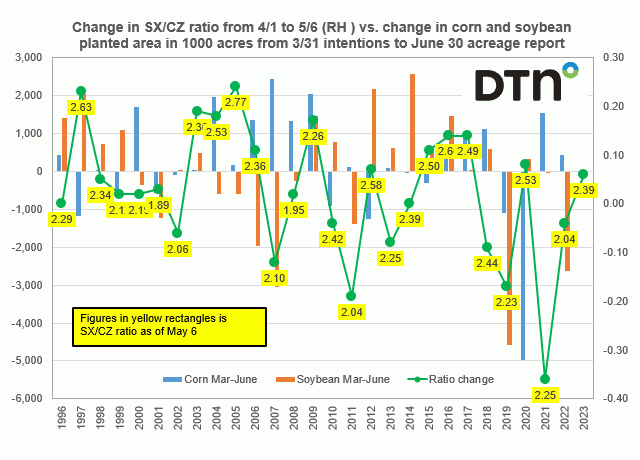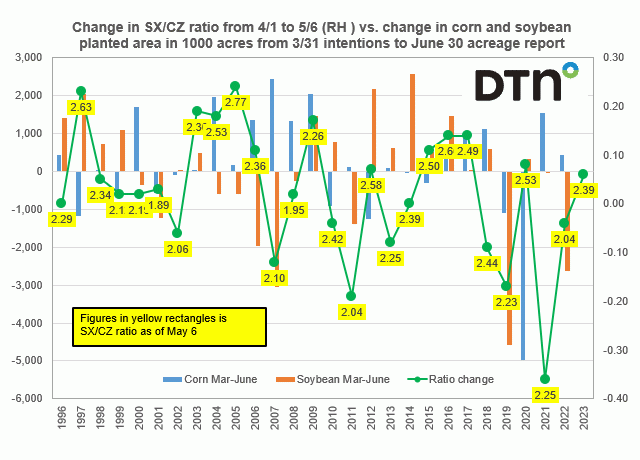Fundamentally Speaking
Smallest HRW Wheat Crop since 1963
U.S. winter wheat conditions deteriorated again this past week with just 27% of the crop rated in good or excellent shape, down 2% from the prior week with 41% either in the poor or very poor category.
The largest producing states including Kansas at 41% poor or very poor, Oklahoma at 52% poor or very poor and Texas at a massive 81% poor or very poor are the reason why U.S. winter wheat ratings as of mid-May are among the worst ever.
No surprise then that the USDA reflected this in last week's first winter wheat production where 2022 output is forecast at 1.17 billion bushels (bb), down 8% from last year and the third lowest total at least since 1974 other than 2002 and 2020.
This is despite the highest planted area since 2016 at 34.23 million acres yet the amount harvested at 24.5 million is the second lowest next to 2020 since 1974 (and probably far beyond that) resulting in a harvested/planted ratio of 71.6% which other than the 71.2% ratio in 2002 is also the lowest since at least 1974.
As of May 1, the United States yield is forecast at 47.9 bushels per acre (bpa), down 2.3 bushels from last year's average yield and the lowest since 2015 at 5.4% below the 2000-2022 trend, again the lowest since 2015.
P[L1] D[0x0] M[300x250] OOP[F] ADUNIT[] T[]
So, a below trend yield and a 20-year low in the harvested/planted ratio has resulted in this lower winter wheat crop.
It is however the hard red winter wheat (HRW) that really suffered compared to this year's soft red winter and white winter crops which appear to have fared much better.
The HRW crop sown in the Central and Southern Plains where a drought of epic proportions resides is seen at 590 million bushels (mb), down 21% from a year ago (750 mb), the smallest U.S. hard red winter wheat crop since 1963.
Again, much of this due to the very poor output prospects in the three largest HRW states of KS, OK and TX.
Along these lines this graphic shows the winter wheat harvested to planted ratio on the left-hand axis and the percent that yields deviated from the 2000-2022 trend on the right-hand axis for these three states.
Top state Kansas has a harvested to planted ratio of 93.9% which is the second lowest since 2014 and the 39 bpa yield is 16.1% below the 2000-2022 trend, and the lowest since 2014.
Oklahoma's harvested to planted ratio of 54.5% is the second lowest also since 2014 and the 25 bpa yield is 13.6% below trend, both the lowest since 2014.
Finally, the harvested to planted ratio of a mere 23.6% in Texas is the lowest since at least 2000, although the 32 bpa yield is actually on trend.
Keep in mind the data uses the final planted and harvested acreage and yields as opposed to this year's harvested and yield as given in the May report with planted area from the end of March intentions report.
Nonetheless, given weather forecasts and current ratings, it looks like the crops are going backwards even more as opposed to improving so the final harvested to planted ratios and yield deviations from trend are likely to move lower in subsequent crop reports.
(c) Copyright 2022 DTN, LLC. All rights reserved.






Comments
To comment, please Log In or Join our Community .